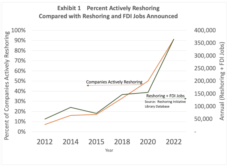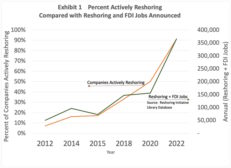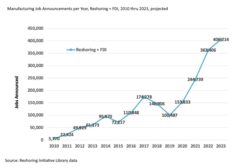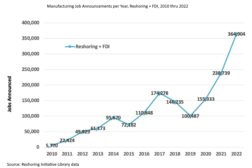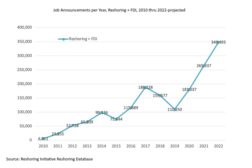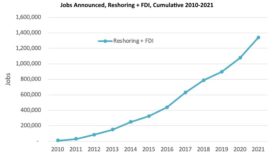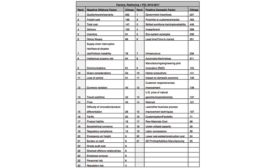Home » reshoring
Articles Tagged with ''reshoring''
Column
Attracting and retaining a quality workforce is the number one issue for the manufacturing sector.
Read More
Quality Headline
Reshoring Rides EV Battery Wave, Taking Aim for Another All-Time High
June 1, 2023
Quality Headline
Reshoring Initiative 1H 2022 Data Report: Multiple Supply Chain Risks Accelerate Reshoring
September 6, 2022
Quality Headline
Reshoring Initiative 2021 Data Report: Essential Product Industries Drive Job Announcements to Record High
May 31, 2022
How to Attract the Next Generation of Engineers
Here are some things organizations can do right now to keep pace with changing technology -- and help polish the field's image.
August 3, 2020
Quality Cost: The Number One Reason Companies Are Reshoring
While quality cost remains one of the most common offshore problems, it is often overlooked in sourcing decisions.
October 8, 2018
INDUSTRY HEADLINE
Reshoring Plus Foreign Direct Investment Added 171,000 U.S. Jobs in 2017
April 11, 2018
Stay in the know with Quality’s comprehensive coverage of
the manufacturing and metrology industries.
eNewsletter | Website | eMagazine
JOIN TODAY!Copyright ©2024. All Rights Reserved BNP Media.
Design, CMS, Hosting & Web Development :: ePublishing

